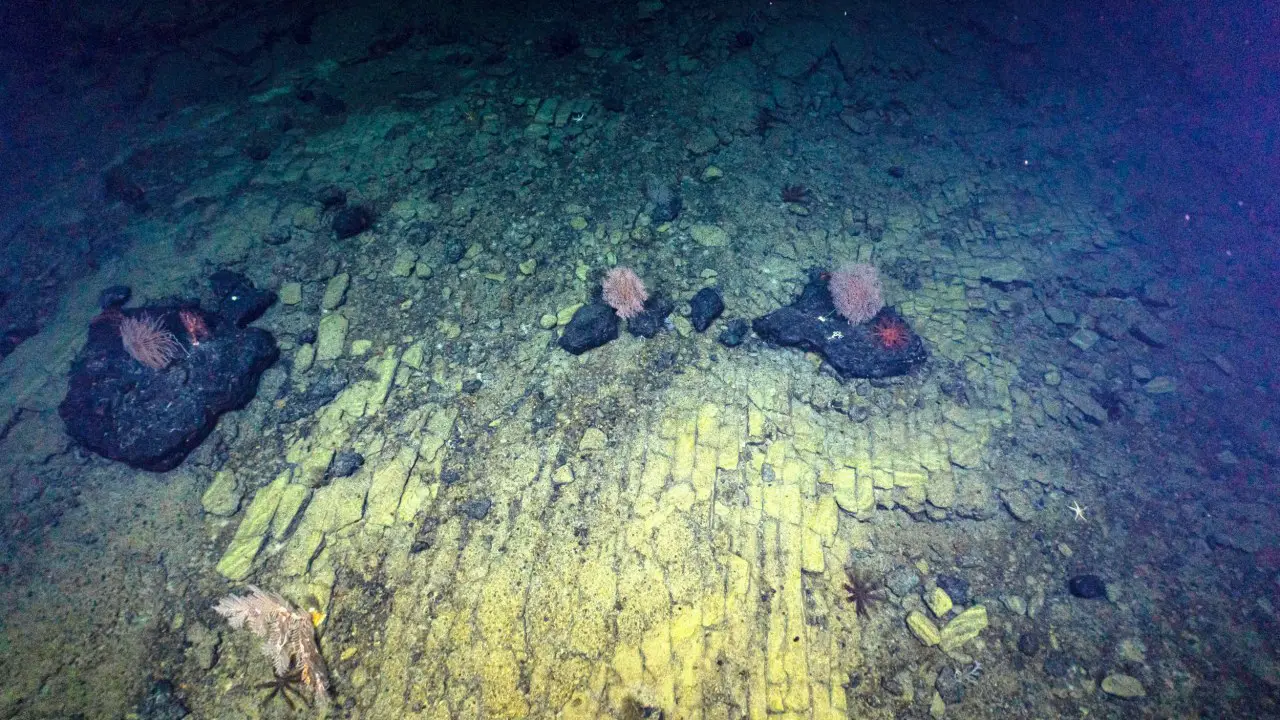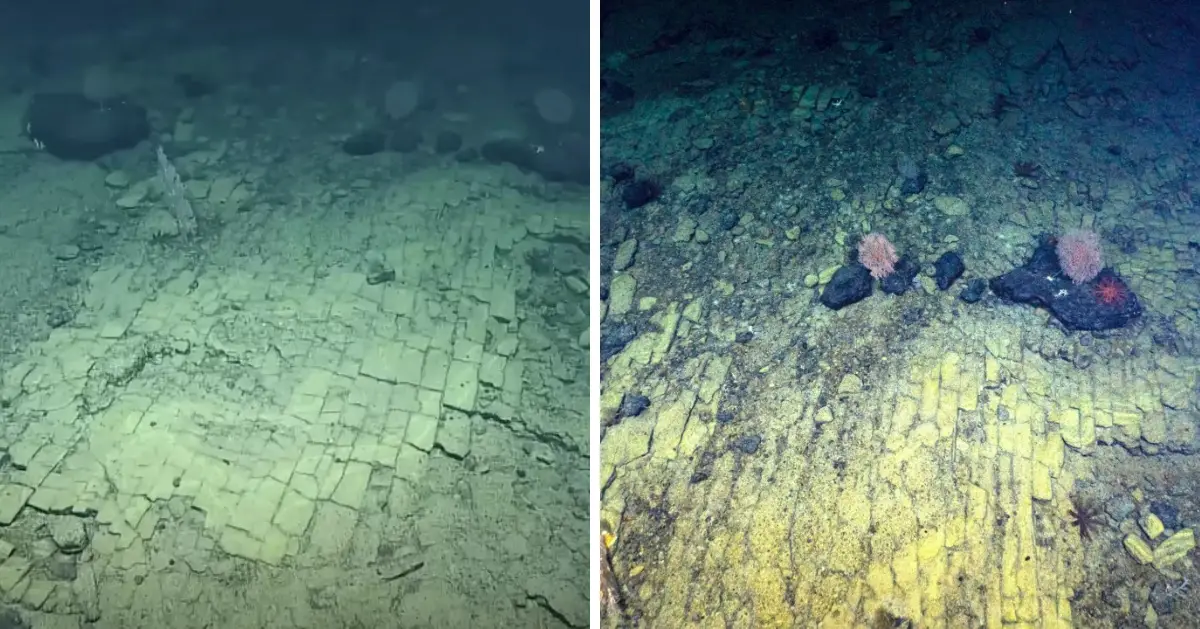In the depths of the Pacific Ocean, scientists have made a remarkable underwater revelation. During an expedition to a deep-sea ridge north of the Hawaiian islands, a peculiar sight resembling a yellow brick road came into view. Using a remotely operated vehicle to explore the Lili’uokalani Ridge Seamounts in Hawaii, the crew of the Exploration Vessel Nautilus stumbled upon this astonishing rock formation.
The primary objective of their mission was to investigate a division within the seamount trail, as the origins of numerous seamounts in the central and western Pacific oceans remained largely enigmatic. As they delved deeper into their exploration, the team unexpectedly documented their findings in real-time. To their astonishment, they encountered a formation that bore an uncanny resemblance to a man-made yellow brick road, composed of distinct rectangular blocks.

The crew’s genuine reactions at the moment of discovery were subsequently shared in a captivating highlight reel on YouTube. One researcher couldn’t help but exclaim, “It’s as though we’ve stumbled upon the road to Atlantis.” Another voice chimed in with a curious query, “Could this be the fabled yellow brick road?”
One team member chimed in, expressing astonishment, “This is absolutely bizarre! Are you kidding me? It’s just mind-boggling!”
You can watch the odd looking underwater road in the video below!
It appears that Dorothy might need to don her swimming trunks for this unexpected underwater spectacle.
However, despite its resemblance to something supernatural or of historical significance, the crew had a logical explanation for the formation they had encountered. According to the description provided in the YouTube video, the geological formation was identified as an example of ancient active volcanic geography. Specifically, at the summit of Nootka Seamount, the team observed a formation resembling a “dried lake bed,” which was later determined to be a fractured flow of hyaloclastite rock. Hyaloclastite rock is a type of volcanic rock that forms during high-energy eruptions, where numerous rock fragments settle on the seabed.

The scientists further elucidated that the peculiar appearance of the volcanic rock was due to the effects of heating and cooling stress resulting from multiple volcanic eruptions. The Nautilus vessel, operated by the nonprofit Ocean Exploration Trust, live-streams the adventures of its crew, allowing viewers to witness firsthand the exploration undertaken by the remotely operated vehicles.

